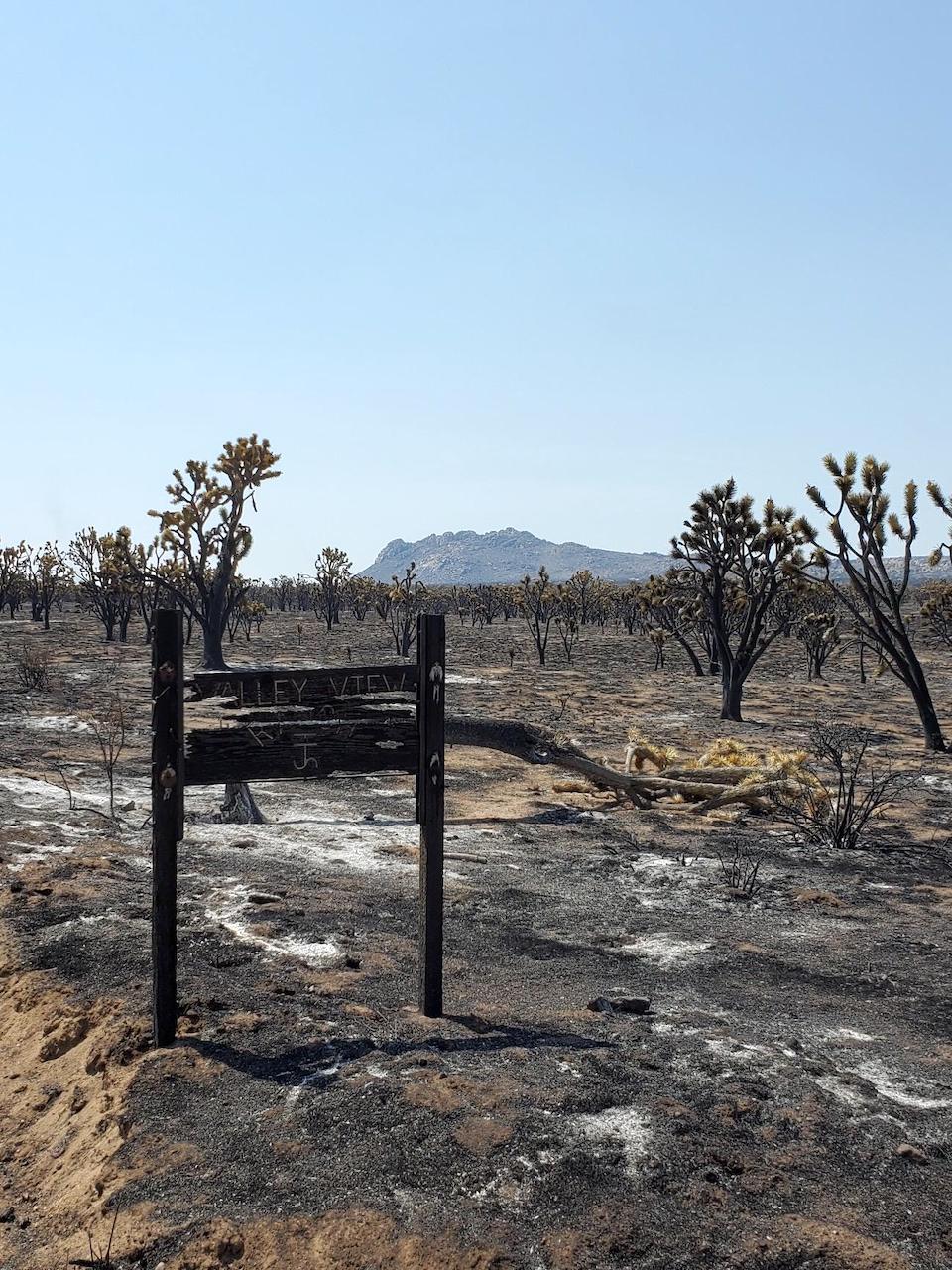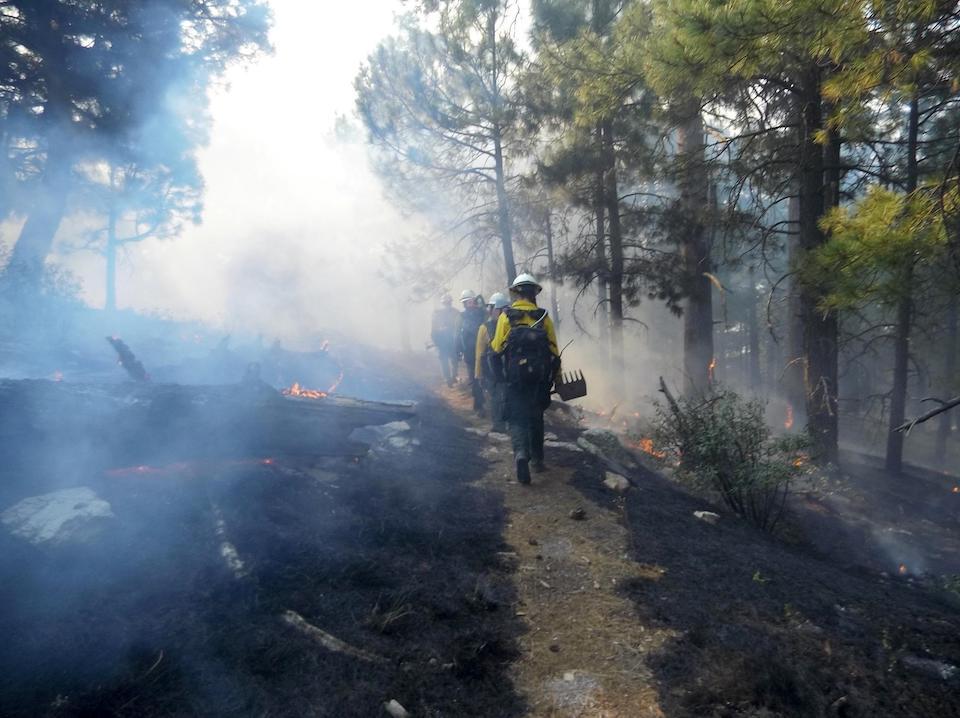
The Dome Fire did substantial damage to the Joshua tree forest in Mojave National Preserve/NPS
Though the Dome Fire that erupted in Mojave National Preserve last weekend and burned through a forest of Joshua trees was nearly fully contained Friday, a number of National Park System units were dealing with fire-related problems or threatened by high fire danger.
Desert tortoise habitat, the world's greatest concentration of Joshua trees, the historic Morning and Evening Star mines, and other cultural resources were being impacted by the lightning-ignited Dome Fire, which started last Saturday. By Friday the blaze had covered 43,273 acres and was 93 percent contained.
"The Joshua tree woodland experienced extreme fire behavior, causing significant fire damage. The fire has also impacted half of the preserve’s wilderness area," fire bosses reported Thursday. "Isolated areas of heat remain within the interior portions of the fire, now producing very limited smoke. Today fire personnel will continue mop-up operations and begin their suppression repair activity where possible while strengthening containment."
Also in California:
- Point Reyes National Seashore closed all areas west of Highway 1 due to the Woodward wildfire that was sparked by lightning on Monday. By Friday it had covered an estimated 2,100 acres in the national seashore. "Coastal traffic is limited to local traffic only," seashore staff said. "There are very few evacuation routes from west Marin and there are multiple fire resources utilizing the roadways. It is imperative that roadways are open in the event of an evacuation order. All backpacking and boat-in campground reservations are cancelled until further notice."
- The Blue Jay and Wolf fires in Yosemite National Park combined covered about 210 acres. The Blue Jay Fire was kicked off by lightning July 24, covers 170 acres, and perimiter lines have been scratched around half the fire. The fire is located within the wilderness 4 miles south of White Wolf campground and 1 mile west of Lukens Lake Trail on the south side of Tioga Road at 9,000 feet in elevation. The Wolf Fire, ignited by lightning on August 11, covers 40 acres with perimeter lines around 20 percent of the fire. The fire is located within the wilderness approximately 1 mile north of White Wolf Campground and 2 miles east of Lukens Lake Trail on the north side of Tioga Road at 9,000 feet in elevation. Both fires are being managed with a confine and contain strategy utilizing minimum impact suppression techniques in the wilderness.

Firefighters on the lines of the Spud Rock Fire in Saguaro National Park/NPS
In Arizona, Saguaro National Park had two wildfires, the Spud Rock Fire and the Mica Bowl Fire. Both were started by lightning strikes on August 13 and were burning in remote areas high within the Saguaro Wilderness.
"Fire managers will take action to protect values at risk, including the Manning Camp Historic Cabin, the Rincon Remote Automated Weather Station (RAWS), a park radio repeater, sensitive wildlife habitat, and recreation infrastructure, as needed, where they can do so safely and effectively," the incident report noted.
Due to the fires, which covered about 375 acres combined, the park has closed Manning Camp and Spud Rock Wilderness campgrounds and all trails on Mica Mountain east of the Arizona Trail.
In Wyoming, fire danger led Yellowstone National Park staff to prohibit charcoal or wood-fueled campfires in the backcountry that may produce ash or embers, including those in established fire rings.
Dinosaur National Monument staff in Utah also issued a ban on "building, maintaining, attending or using a fire, campfire, charcoal, coal, or wood stove fire, including within a developed recreation site" due to heightened fire danger caused by dry, hot weather. Smoking also was prohibited, except when in a closed vehicle.



Add comment